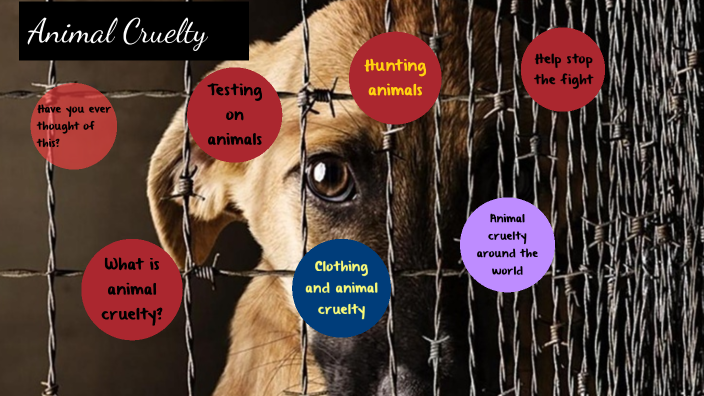Animal cruelty remains a pervasive issue worldwide, engendering substantial concern among animal advocates, legal professionals, and the general populace. However, despite the public outcry and moral imperatives connected to this heinous act, proving animal cruelty spans a spectrum of challenges. Legal standards vary not only by jurisdiction but also by the complexity of evidence required to substantiate claims. This article unpacks the intricate web of evidence challenges and legal standards that define the prosecution of animal cruelty cases.
Firstly, it is imperative to delineate the two predominant categories of animal cruelty: active and passive. Active cruelty involves direct actions that inflict harm, such as beating, torturing, or mutilating an animal. Conversely, passive cruelty refers to negligence or failure to provide necessary care, exemplified by insufficient shelter, food, or medical treatment. Both forms present distinct evidentiary challenges, complicating the ability to establish guilt in a court of law.
One of the foremost hurdles in proving animal cruelty lies in the adequacy of evidence. Animal cruelty cases often hinge on the collection of direct evidence, such as photographs, videos, or eyewitness accounts. However, documenting such evidence can be fraught with difficulties. For instance, many instances of animal cruelty occur in isolated environments where witnesses are scarce, and perpetrators often operate in secrecy. This clandestine nature creates an environment where substantiating claims is exceptionally difficult.
Moreover, the subjective interpretation of cruelty complicates the legal landscape further. What one individual deems as abusive behavior may not be perceived the same way by another. This variation in perception can lead to inconsistencies in witness testimony and may ultimately impact the outcomes of legal proceedings. Legal standards often necessitate clear, unequivocal evidence to establish an act of cruelty had occurred. This requirement can pose a significant barrier, particularly when such evidence is circumstantial or reliant on expert testimony.
Furthermore, the legal definitions of animal cruelty are not uniformly stringent. Different jurisdictions have varied statutes governing what constitutes animal cruelty, encompassing a range of actions and standards of care. Some states have enacted comprehensive legislation encompassing both active and passive cruelty, while others maintain more lenient standards. This disparity can lead to substantial inconsistencies in legal proceedings, resulting in challenges for advocates seeking justice for abused animals.
Concerning the evidentiary standards, the legal system operates under varying thresholds of proof. In criminal cases, the prosecution bears the burden of demonstrating guilt beyond a reasonable doubt, a standard that can be particularly difficult to meet in animal cruelty cases. Additionally, the reliance on expert witnesses, such as veterinarians or animal behaviorists, can further complicate matters; if their qualifications or the validity of their testimony are called into question, the entire case may falter.
In light of these complexities, law enforcement agencies and animal welfare organizations must establish robust protocols for investigating reports of animal cruelty. Proper training for officers executing such investigations is crucial. They should develop skills in recognizing signs of neglect or abuse, collecting and documenting evidence, and effectively interviewing witnesses. The importance of precise and persuasive documentation cannot be overstated, as it often serves as the linchpin of convictions in court.
Emerging technologies also present both opportunities and challenges in the realm of animal cruelty evidence. For illustration, the proliferation of smartphones has enabled civilians to document acts of cruelty with unprecedented ease. Such evidence, however, can also lead to complications regarding the legality of evidence collection, particularly around privacy issues. The admissibility of this evidence in court is inherently dependent on how it was obtained, often leaving courts grappling with the intersection of technology and traditional legal frameworks.
Policing animal cruelty also reveals systemic issues within animal welfare legislation. Legislative bodies are tasked with crafting laws that both protect animals and empower individuals to report suspected abuse. However, lack of resources, political will, or public interest may inhibit the enactment of stringent laws or the adequate funding necessary for their enforcement. This can ultimately lead to a culture of impunity among those who exploit or abuse animals.
Another element to consider is the role of public perception and media influence in cases of animal cruelty. High-profile cases often garner significant media attention and mobilize public advocacy. Yet, such public sentiment can create a double-edged sword; on one hand, it promotes awareness and urgency, while on the other, it can pressure legal systems to expedite prosecutions that may not have substantial evidence to support them.
Ultimately, the considerable hurdles in proving animal cruelty are emblematic of the broader societal struggle to protect the voiceless and vulnerable. Combining improved legal protections with elevated community awareness and education can cultivate an environment where animal cruelty is promptly identified, effectively reported, and persuasively prosecuted. Only then can we hope to see a meaningful reduction in the suffering that countless animals endure everyday, deserving of our compassion and robust legal safeguards. In the quest for justice, vigilance, advocacy, and systemic change remain paramount in the battle against animal cruelty.





